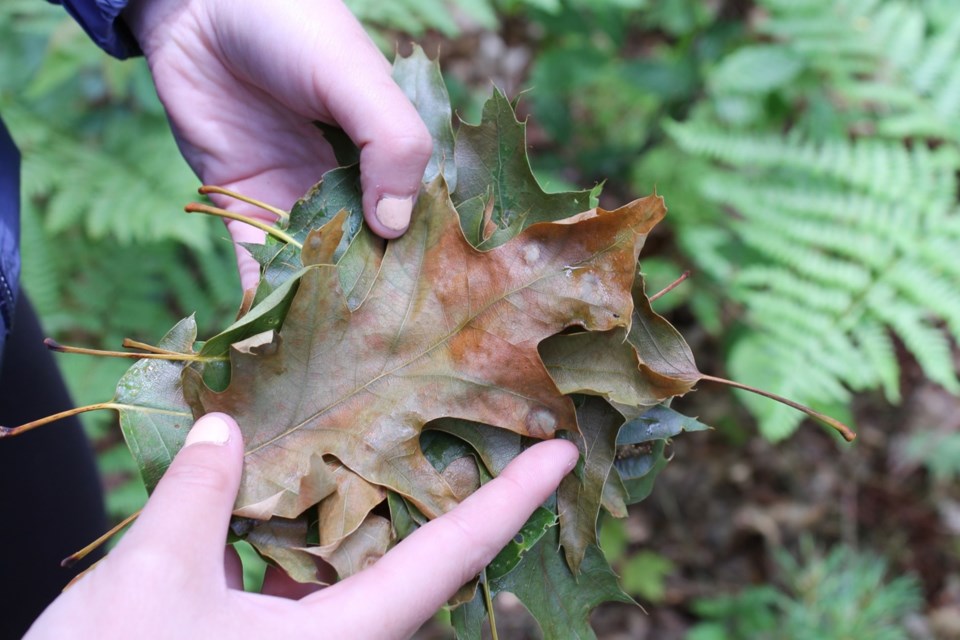Ontario residents are being urged to refrain from pruning oak trees during the no-pruning season, which runs from now until November.
Pruning or otherwise damaging oak trees during this time makes them especially vulnerable to oak wilt disease, according to the Invasive Species Centre based in Sault Ste. Marie.
Oak wilt is an invasive vascular disease caused by a fungus (Bretziella fagacearum) that disrupts the movement of water and nutrients through oak trees.
The leaves of infected oaks can start to wilt and drop prematurely, eventually resulting in complete defoliation.
All oaks are susceptible to oak wilt, but red oaks are particularly vulnerable and can die in as little as two to six weeks following infection, the centre said in a news release.
Oak wilt was first detected in Canada in 2023 on a residential property in Niagara Falls, followed by confirmed detections in Niagara-on-the-Lake and Township of Springwater.
Oak wilt has also been confirmed in 24 U.S. states, including those close to Canadian borders such as Michigan, Ohio, Pennsylvania, and New York.
“The loss of oak trees can be felt in both urban and natural spaces as oaks are found in many backyards, parks, woodlots, and forests,” said Colin Cassin, executive director at the Invasive Species Centre.
“To prevent the spread, we encourage people to avoid pruning any oak trees until November, which is when the sap beetles that transmit oak wilt are less active. Fresh wounds attract these beetles, increasing the risk of infection.”
If pruning must occur from April to November, or if a tree is injured, the centre advised applying a thin layer of wound paint or shellac to the wound immediately.
What community members can do
In addition to avoiding pruning during the high-risk period, the centre says people can protect oak trees by not transporting firewood, and by monitoring the health of oak trees.
The public is encouraged to report any suspected signs of oak wilt to the Canadian Food Inspection Agency (CFIA).
What to look for:
- Wilting and bronzing of oak leaves, starting from the top of the tree and moving down
- Discolouration of the leaves, beginning at the leaf edges and progressing to the midrib
- Premature leaf fall
- White, grey, or black fungal mats, also referred to as “pressure pads”, just under the bark that sometimes emit a fruity smell
- Vertical bark cracks in the trunk and large branches from the fungal spore mat exerting outward pressure on the bark
A good report to the CFIA includes an accurate location of the suspect tree and photos of the symptoms. The CFIA will respond to reports of oak wilt and take appropriate action, which may include site surveying and sample collection.
The Invasive Species Centre said that as an economic, community, and environmental staple in Canada, oak trees "enhance property values, reduce energy costs for homeowners, sequester carbon, reduce air pollution and soil erosion, stabilize slopes, provide habitat and food for wildlife, are a source of timber for the forest industry, and more".
The centre has resources available to learn more about oak wilt, including free factsheets, a municipal checklist, and webinars, including an Oak Wilt Question and Answer Expert Panel Webinar.
